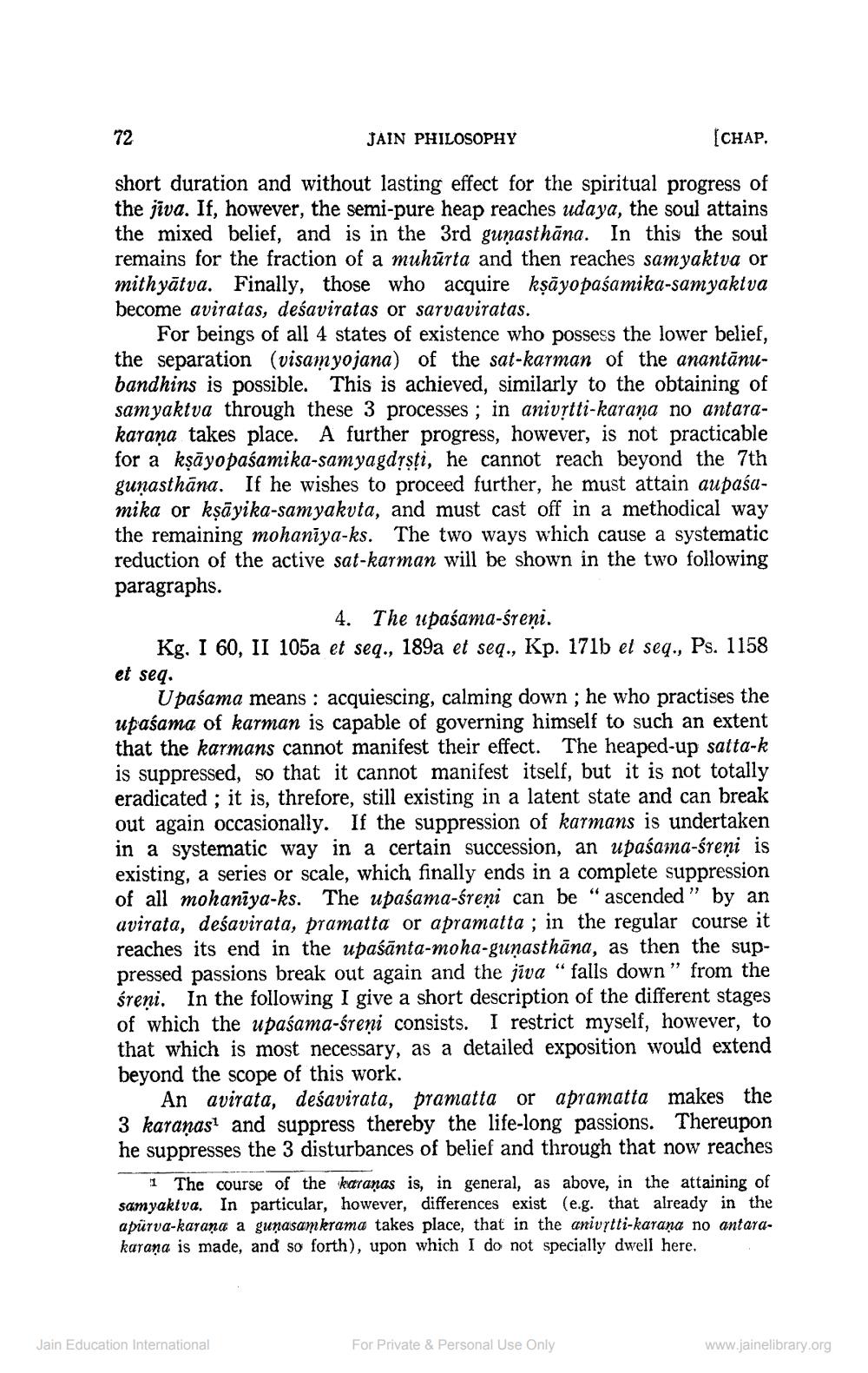________________
72
JAIN PHILOSOPHY
short duration and without lasting effect for the spiritual progress of the jiva. If, however, the semi-pure heap reaches udaya, the soul attains the mixed belief, and is in the 3rd guṇasthāna. In this the soul remains for the fraction of a muhurta and then reaches samyaktva or mithyātva. Finally, those who acquire kṣayopaśamika-samyaktva become aviratas, deśaviratas or sarvaviratas.
[CHAP.
For beings of all 4 states of existence who possess the lower belief, the separation (visamyojana) of the sat-karman of the anantānubandhins is possible. This is achieved, similarly to the obtaining of samyaktva through these 3 processes; in anivṛtti-karana no antarakarana takes place. A further progress, however, is not practicable for a kṣayopaśamika-samyagdṛṣṭi, he cannot reach beyond the 7th guṇasthāna. If he wishes to proceed further, he must attain aupaśamika or kṣayika-samyakuta, and must cast off in a methodical way the remaining mohaniya-ks. The two ways which cause a systematic reduction of the active sat-karman will be shown in the two following paragraphs.
4. The upasama-śreņi.
Kg. I 60, II 105a et seq., 189a et seq., Kp. 171b et seq., Ps. 1158 et seq.
Upasama means: acquiescing, calming down; he who practises the upasama of karman is capable of governing himself to such an extent that the karmans cannot manifest their effect. The heaped-up satta-k is suppressed, so that it cannot manifest itself, but it is not totally eradicated; it is, threfore, still existing in a latent state and can break out again occasionally. If the suppression of karmans is undertaken in a systematic way in a certain succession, an upaśama-śreni is existing, a series or scale, which finally ends in a complete suppression of all mohaniya-ks. The upasama-śreni can be "ascended" by an avirata, deśavirata, pramatta or apramatta; in the regular course it reaches its end in the upasanta-moha-guṇasthāna, as then the suppressed passions break out again and the jiva "falls down" from the śreņi. In the following I give a short description of the different stages of which the upasama-śreni consists. I restrict myself, however, to that which is most necessary, as a detailed exposition would extend beyond the scope of this work.
An avirata, deśavirata, pramatta or apramatta makes the 3 karanas1 and suppress thereby the life-long passions. Thereupon he suppresses the 3 disturbances of belief and through that now reaches
Jain Education International
1 The course of the karanas is, in general, as above, in the attaining of samyaktva. In particular, however, differences exist (e.g. that already in the apürva-karana a gunasamkrama takes place, that in the anivṛtti-karana no antarakarana is made, and so forth), upon which I do not specially dwell here.
For Private & Personal Use Only
www.jainelibrary.org




